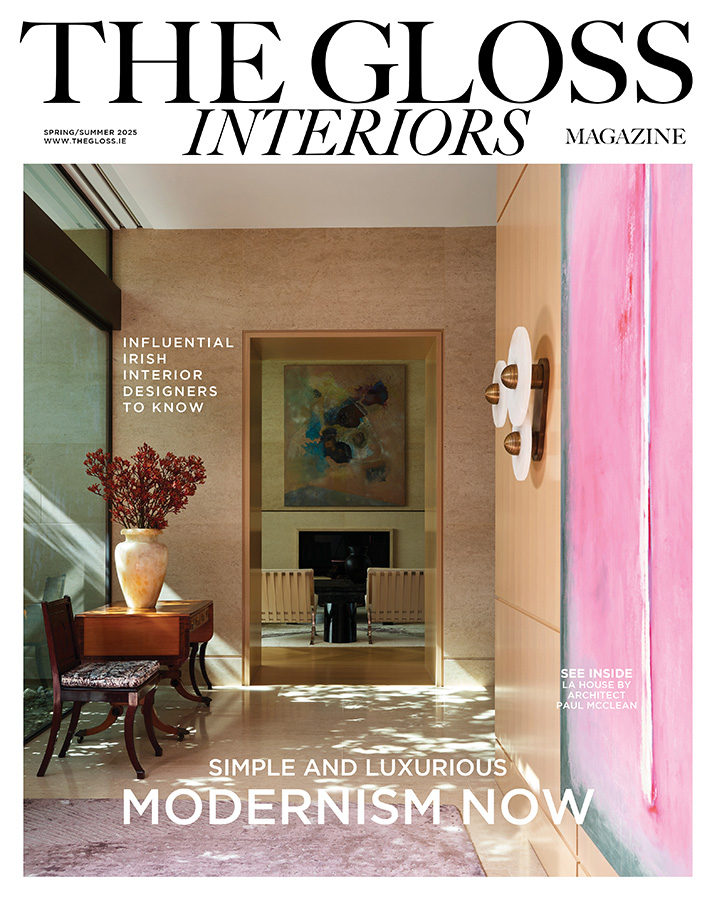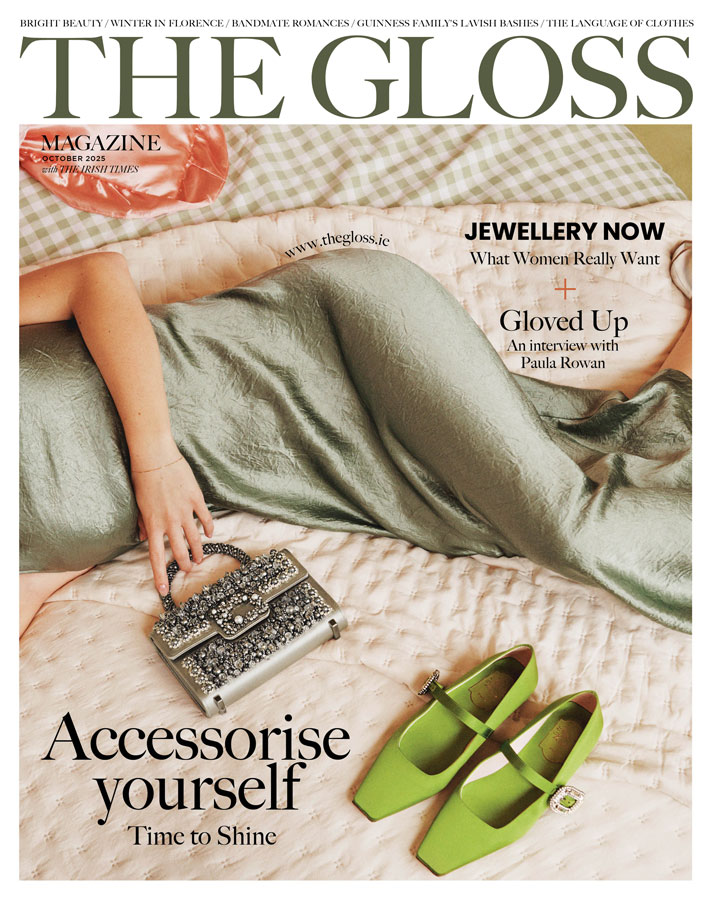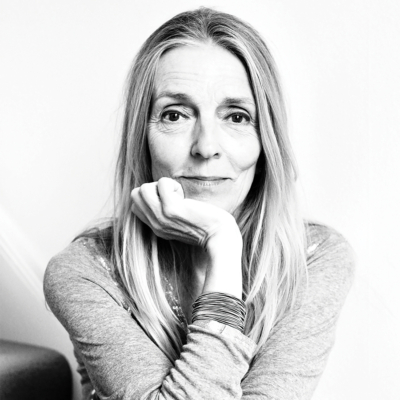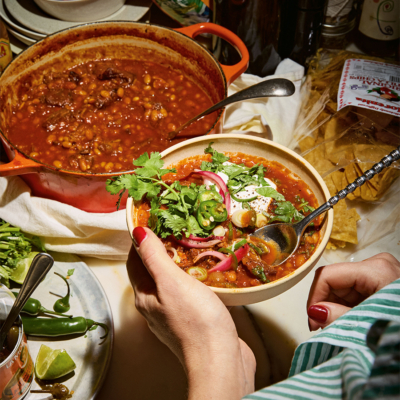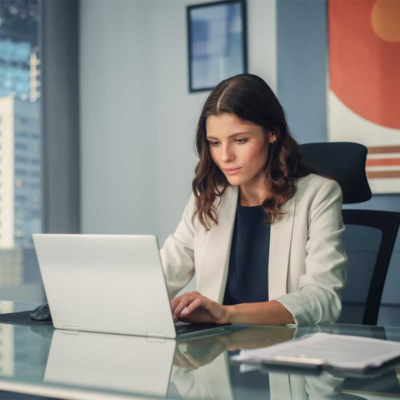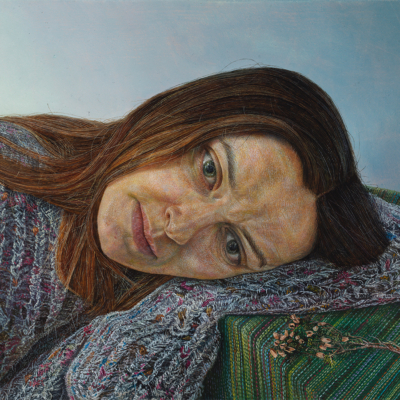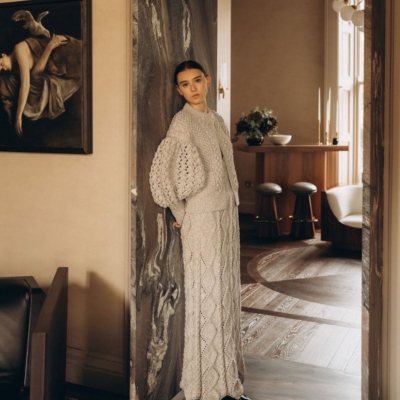The Cyprus-based Irish artist’s new exhibition uncovers refugee stories by incorporating some personal objects into artworks, while exploring how global restrictions due to the pandemic is a constant reality for displaced people…
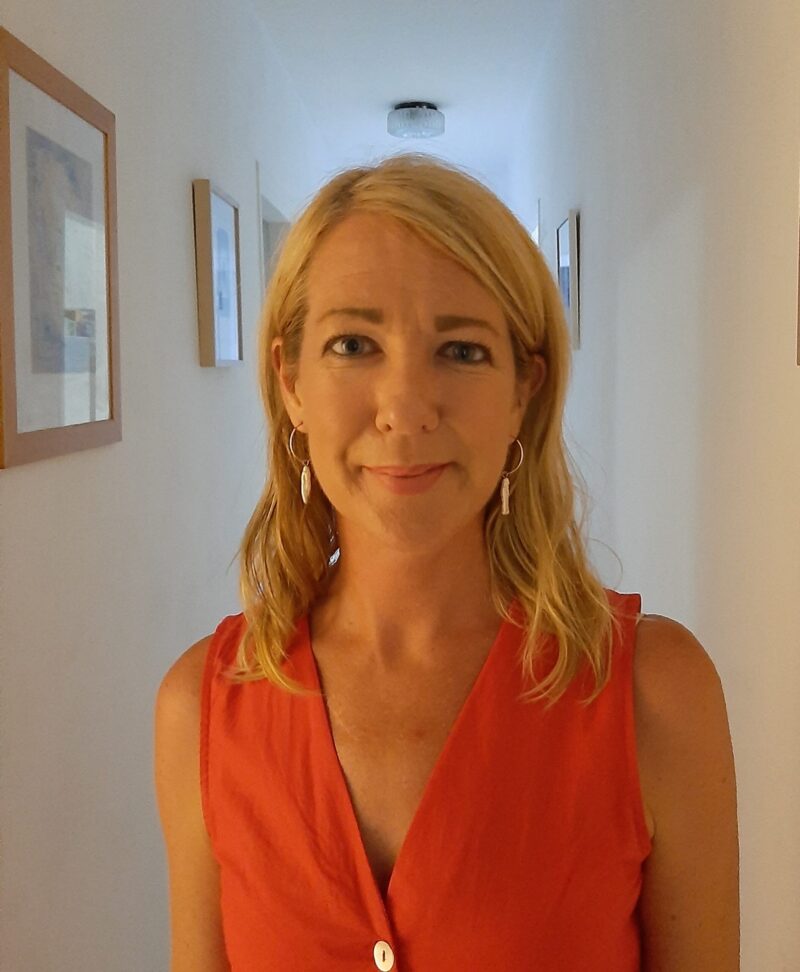
When did you begin working on your new exhibition and what was it’s inspiration?
I began working on “Displaced Privilege” in September 2019. My inspiration was to examine or excavate the personal experience of displacement from collective stories. I expressed these stories using personal objects from the journey of people who had been displaced by conflict. I began to look at the comparisons and contrasts of the narrative of the refugee and the non-refugee. With the pandemic I noticed a commonality between the current global restrictions due to the pandemic and the constant reality for those displaced by conflict that I wanted to highlight in the paintings and installation. I want this exhibition to serve as a reminder that the freedom of movement, access to medicine and education are indeed a privilege.
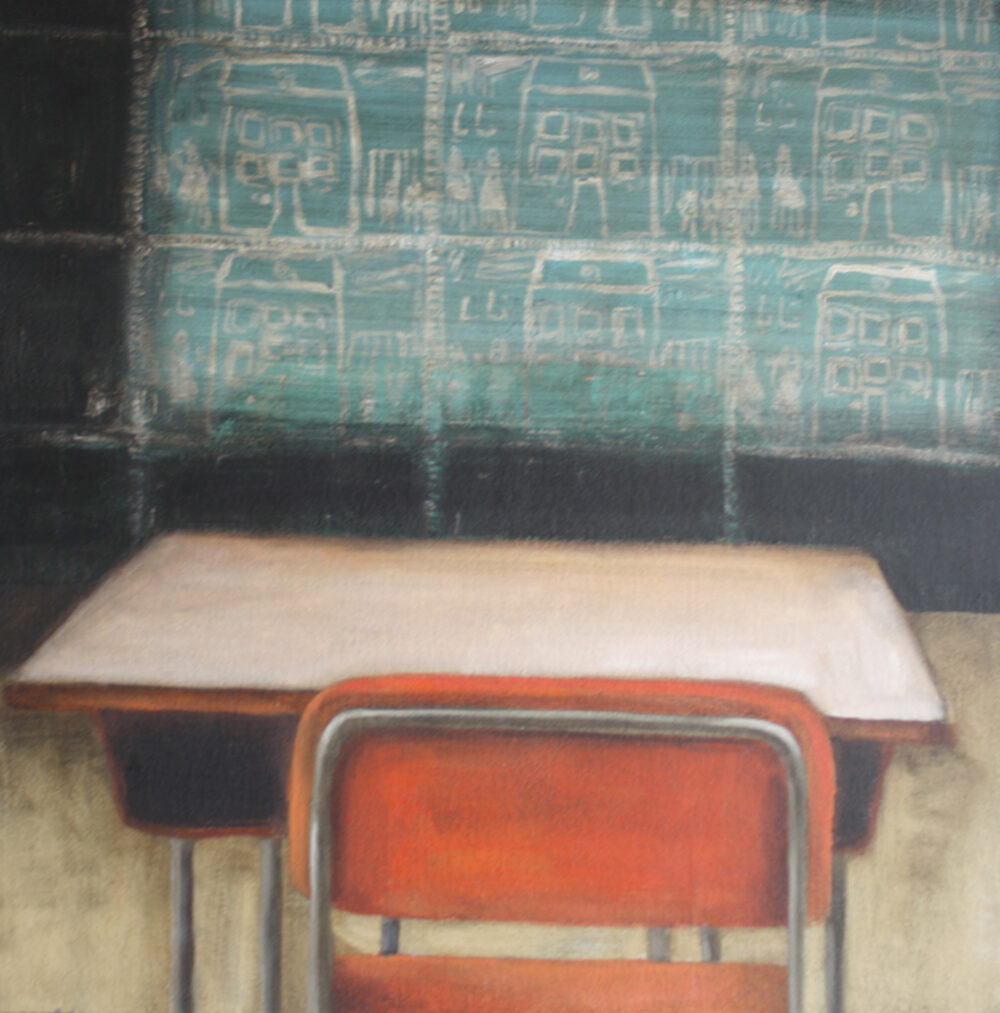
Can you tell us about some of the personal stories behind the artworks?
Yes, there are personal stories behind each artwork. I met and informally interviewed women who had been displaced from different countries and from different times in history. The narrative of the displaced or the refugee repeats itself through history. It is important to be reminded that each country has its own story of emigration. The painting “No More Time for Learning” holds a Syrian child’s story of displacement because of the current war in Syria. Despite missing a couple of years of education, the child has now integrated into school well and makes beautiful drawings of houses and gardens – memories of her life in Syria. The painting depicts an empty school desk with the backdrop of a chalkboard with a child’s drawing of two-storey house with swings repeated. The painting exposes the role that privilege plays in the global pandemic, acknowledging the contrast between the interruption of childhood due to the Covid pandemic and the loss of childhood due to war.

The painting “A Syrian Story of Displacement” depicts a traditional Syrian weave in oil paint. Woven into the pattern is the story of a young Syrian woman who spent the first three years of married life in a refugee camp in the Lebanon, where she gave birth to her first child. The pattern in the painting is made up of personal objects from her story integrated into the pattern. The objects are often repeated, like the border of infant bracelets or a dollar bill, which was given to her while she worked in the laundry on the refugee camp. It also contains the pattern from jewellery given to her from her family in Syria. She told me that she keeps them in a box and doesn’t wear them because people often begrudge her having these small pieces of gold.
The painting “A Cypriot Story of Displacement” depicts a traditional Cypriot lace pattern but woven into the pattern is the personal story of a woman who was displaced from her home in northern Cyprus during the war of 1974. Among the objects that appear in the lace pattern is a crochet table mat, a locket and the pattern of ceramic plates which were given to her by a Turkish Cypriot family who had to also leave their home during the conflict. These plates were for her, an act of kindness from fellow Cypriots from the opposing side of a cruel conflict.
The painting “Passport Tents” holds the personal stories of all those who haven’t been able to travel to see their families due to the global travel restrictions and also the personal stories of those who are displaced around the world due to conflict and war and who may never see their families and homeland again.

Where and how do you work?
I work in my studio in Paphos in Cyprus. I work from objects directly and also from photographs. I always begin with lots of sketches and drawings. I also write about my work as it progresses. It is a technique that helps guide the direction that the work and gives a clarity to the concepts behind the work. For installation work, I begin with lots of drawing and then I make small maquettes of the initial ideas before making them on a larger scale.
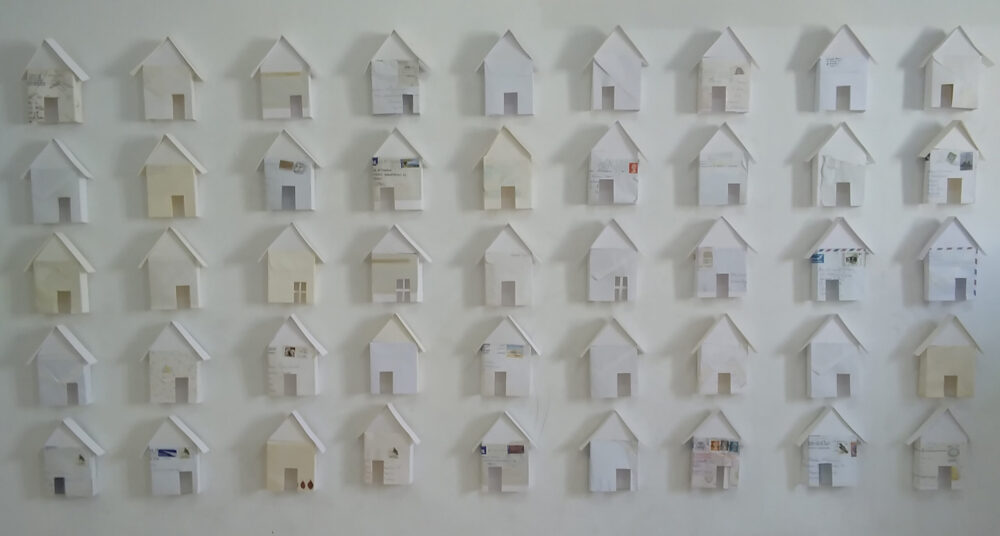
You work on both a large and small scale …
Yes, I work on both a very small and very large scale. My paintings are usually smaller in scale to my charcoal drawings, which are usually a minimum of 150cm in height. My installation work is always on an even larger monumental scale, especially the public installations I have made, like The Touring Tama (2013) in Merrion Square, Dublin; The House of Letters (2017 ) in Paphos, Cyprus; The Tama and the Rose (2019 with the well known German curator Hermann Pitz) in Cyprus; and Lost Lace (sculpture in context 2020).
What are you working on next?
At present I am working on two new installations. One is a larger version of “Lost Lace” which will consist of 7,000 handkerchief roses laid out in a public park in the shape of a lace pattern – a homage to the lives lost to Covid-19 in Ireland and Northern Ireland. I am hoping to exhibit this in Dublin in Spring 2022.
The second is a large collection of miniature tents made from baby clothes. It is a memorial to children who are born into war and also to the children who lost their lives in religious institutions in Ireland. Both installations examine how the individual life often gets lost in the collective loss of life.
I am also beginning the next body of work, based on the narrative of young men who have been displaced through conflict and who struggle to find a new future and a safe environment in order to move on with their lives. I am currently meeting with different groups of young male refugees. They are often quite vulnerable, and are often feared and misjudged. The aim of this work will be to present their stories with the hope of generating a greater empathy for these young men.
Need to Know: “Displaced Privilege” by Miriam McConnon is at Olivier Cornet Gallery, 3 Great Denmark Street, Dublin 1, until June 30. Pre-booking is essential. It can also be viewed in the 3D virtual space online; www.oliviercornetgallery.com



